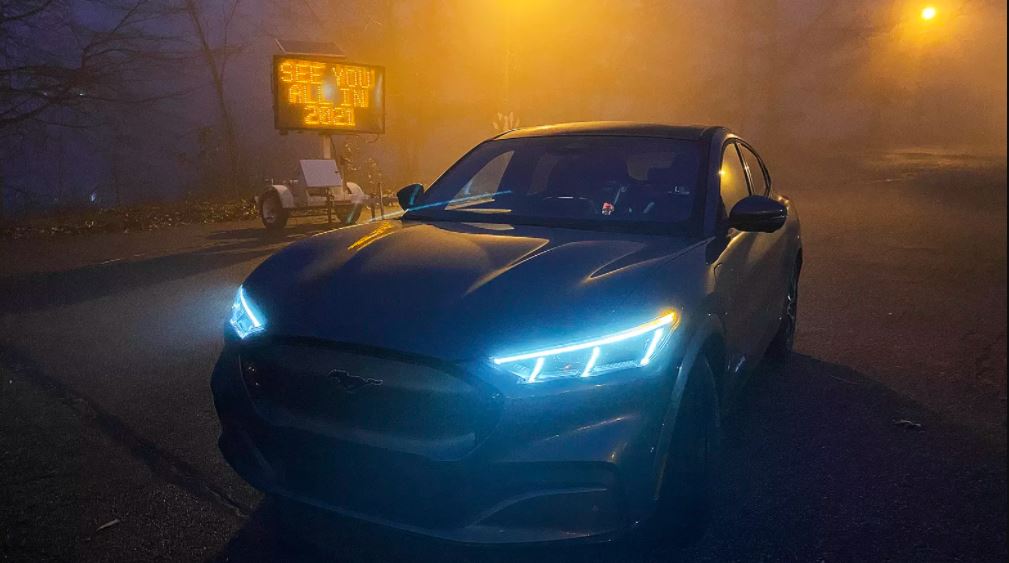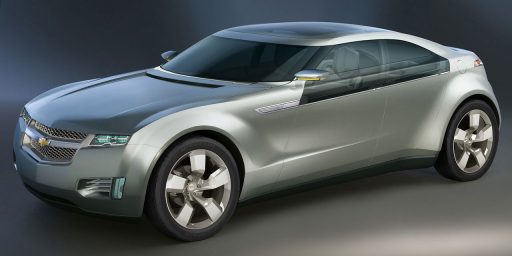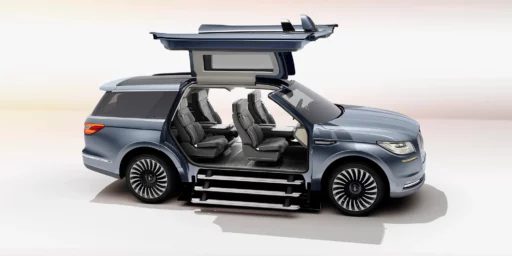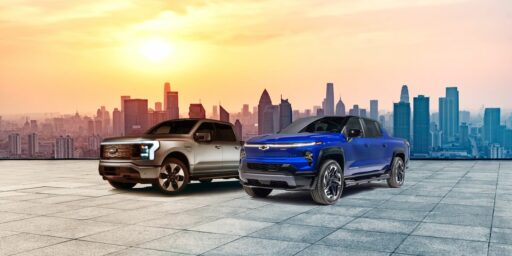Are Electric Vehicles Cheaper to Drive?
It depends on how you do the math.

YahooNews syndicates a piece asking “Which Really Costs More: Charging an EV or Filling Up Your Tank With Gas?” The answer, not shockingly, is It depends.
The conventional wisdom, of course, is that electric vehicles cost more up front but pay that back over time in fuel savings. And there’s good reason to think that:
In 2020, the Department of Energy (DOE) released a study that was more comprehensive than those that had come before. Using a state-level assessment of EV charging costs, the study’s results were much more granular than what came out of previous studies, which assumed a singular value.
It found that the national average to charge an EV is $0.15 per kWh, which DOE determined translated into savings of as much as $14,500 over 15 years on fuel costs alone.
On top of that, EVs are cheaper to maintain — $0.04 cheaper per mile, according to the DOE — which adds another $8,000 in savings for EV drivers over the course of 200,000 miles.
The jury had returned a verdict.
Yes, EVs cost more to buy, but they paid their owners back for the difference and then some over the life of the car — plus the whole zero-emissions thing — and that’s not even counting state and federal tax credits and other incentives.
But that’s not the whole story.
On Oct. 21, 2021, the Anderson Economic Group — a respected economic consulting firm with decades of auto industry experience — released the results of its own study, which was six months in the making. It was the first installation in a larger economic research series that is still being conducted.
Anderson parsed the costs of EV charging much more finely, going beyond just a state-by-state breakdown to examine rural/urban variations. The new methodology also separated vehicles by segment, use and cost.
Titled “Comparison: Real World Cost of Fueling EVs and ICE Vehicles,” the report’s startling results were summarized in its official synopsis: “Electric vehicles can be more expensive to fuel than their internal combustion engine counterparts.”
DOE says that the average cost of electricity for an EV is $0.04 per mile, which means it costs $9 to fully charge a battery with a 200-mile range. By comparison, it costs between $0.07 and $0.10 per mile to fuel a gas car, according to AAA.
The Anderson study, however, challenged the presumption that EVs are cheaper to drive — or even cheaper to fuel. It found that powering EVs comes with four hidden costs: the purchase of a home charger, the greatly inflated price of commercial charging at public stations, “deadhead miles” spent driving to find far-flung charging stations and registration taxes that states slap on EV drivers to make up for the fact that they don’t pay gas taxes. The study also factored in the cost of time spent searching for reliable charging stations, which — even when located — can take a half-hour for a charge of 20% to 80%.
Traditional research — like the industry standard provided by DOE — doesn’t take any of that into account. It also presumes a heavily lopsided reliance on cheap, at-home charging instead of expensive commercial charging.
It strikes me that these analyses really ask different questions.
If we’re trying to answer the titular question of the post—the direct cost of fueling the two vehicle types—the DOE methodology is closer to accurate but, yes, it’s reasonable to factor in the additional costs of fueling away from home, if that’s what most people do, and fuel wasted by going out of one’s way to reach a fueling station.
If, on the other hand, we’re trying to figure out the all-in cost of electric vs gasoline-powered vehicles—which seems the more interesting question—then all of the other factors, including government subsidies and differential tax rates need to be considered. And, yes, home charging stations—especially ones that charge quickly—are rather pricey and vehicle-specific.
And, while “the cost of time spent” finding a refueling a station and waiting for the car to charge (over and above the typical time to pump gasoline) are indeed factors to consider in making a purchase decision, I’m not sure it’s relevant in the economic calculation.
The wife and I both have relatively new gasoline-powered vehicles. My hope is that, when the time comes to replace them, electric vehicles make more sense than they do now. Aside from the substantial differential in up-front cost, the charging infrastructure simply isn’t adequate yet, even though we live in the DC suburbs. While Tesla has put up a goodly number of stations in these parts, they’re proprietary and they don’t yet make a vehicle that I would want as my only option. (We really need seating for 7 on a regular basis, so at least one of us needs a vehicle with a third row.)






The single most important thing to consider about electric versus gas is flexibility. Electricity can be generated in many different ways, including locally. Yes, the electric charging infrastructure isn’t what it should be, but it will be.
We live in a row house in an urban center with outdoor parking, so an all electric vehicle is not an option for us. However, our next vehicle will be a plug in hybrid. Better gas mileage from the get go, and eventually we will be moving so a garage will be in our future.
The other advantage of an EV is maintenance costs. Oil changes and time/cost to get to a place for a change need to be considered. Also there is essentially no transmission so those maintenance costs and issues are gone.
Lastly the cost to go to a filling station and time standing in the cold here in MN make overnight charging using a reasonable cost home charger much more pleasant.
We are on our second Volt, which is a plug-in hybrid, and we end up doing 90% of our driving using electricity only, even in MN cold (the other 10% is very long trips to San Diego or -30 days when it is more economical to heat using ICE than electricity (though could just use electricity but with pretty big range hit)).
There is no need to buy a super fast charger if you can plug in every night and aren’t driving more than 150 miles every single day.
In fact with our first Volt we were leasing and not sure if we would like EV so just used the 110 charger that came with the car and would get enough charge to do 80% of our driving on electricity (less range on that Volt).
BTW, really nice to be able to preheat car in closed garage as no exhaust issues and no range loss as it preheats via the charger.
This is an area where I think government regulation makes sense. Market forces, especially during the early adoption period of new technologies, tend to push towards keeping everything proprietary to lock folks into a specific platform. There are very few incentives to move towards more open standards. And traditionally, when that happens in tech, it’s due to some other disruptive tech (i.e. the WWW leading towards the widespread adoption of standardized digital image formats).
And even when there is general standardization, there can still be major holdouts. It’s telling that the only thing that *might* cause Apple to join the rest of the world in using universal USB-C chargers on its phones is if the EU forces it to.
Depends is the best answer. If you have a dedicated parking place where you can install a home charger, even amortizing the cost of the charger will make an EV cheaper to fuel. But if you need to depend on public chargers you’ll be paying more.
The other question is the total cost of ownership when comparing an EV and ICE. A few months ago Yahoo had a link to an article published in Car and Driver looking at TCoO. For the comparison they used a Tesla that they had in a year long review and a comparably priced BMW. IIRC, the delta in TCoC was $400 with the Tesla being cheaper, but when you are talking about $60,000 cars, $400 isn’t a defining amount of money. Tesla was hurt in two areas, the cost of replacement tires and depreciation.
Having family who had to deal with weeks of total regional grid failure in such geographically and climatically distinct places as Quebec (ice storm 1998) and Puerto Rico (Hurricane Maria 2017), I’m really hesitant to go with a fully electric vehicle. I know that only two situations where it would be a problem in a 20 year period might seem like a lousy reason for concern, but on the other hand, I’ve been driving for roughly 30 years now without ever having an accident, but that doesn’t mean I’d be comfortable buying a car without seatbelts. In a sudden, unexpected emergency, it’s important to know your mission-critical equipment (which is what a vehicle is in emergencies) will work for you.
@R. Dave: so…those areas still have hand crank gas pumps for when the grid goes down? Puerto Rico may, but in the continental US and Canada, they haven’t been a thing for decades. Would you even know how to operate one if you found it?
@Sleeping Dog:
One of these first years we’ll be replacing our two old Hondas with something electric. I’ve been thinking one coming in off a two or three year lease, so someone else has taken the big early depreciation hit.
While trying to find the TCoO for EV v. ICE, I came across this chart at C&D comparing two VW models, one EV the other ICE. Note the predicted value of the vehicle at the end of the 5 year period is based on data provided by leasing companies on what the residual value will be after a period of years. EV values get crushed.
https://hips.hearstapps.com/hmg-prod.s3.amazonaws.com/images/20questions-cheaper-1625602540.png?resize=768:*
@Matt Bernius: Only Tesla uses a proprietary charger. There are different standards based on the capacity of your vehicle but if your non Tesla car has the capacity to use the higher speed charger then the given plug will fit. If not there is always the lower speed 220 SAE charging option. I think I read Tesla is going to open up for non-Tesla cars.
@Thomm:
Thomm, have you ever heard of generators?
@Michael Cain:
See the chart at the link here @Sleeping Dog: You are on to something.
@Sleeping Dog: and generators can’t be used to charge an EV?
In my area many people have solar panels and charge their cars from the sun. The infrastructure is very expensive to put in place (north of $20,000 for a basic system), and the proposed Net Metering 3.0 would basically destroy the rooftop solar industry in Southern California by charging a very large fee to solar customers.
Solar-powered EVs are probably a great solution for a huge majority of people in the long term, but at the moment regulatory capture won’t allow it to happen quickly.
@R. Dave: Yep, I anticipate keeping a plug in hybrid for quite a long time, partly for the reasons you mention. It’s interesting that until the last couple of years there wasn’t a plug-in hybrid that would fulfill our needs (needs to be able to tow a 1750 pound (empty) camper trailer). Today, there is exactly one: the Toyota RAV4 Prime, as ugly as every other SUV in my book, but it suits our needs perfectly. Very hard to get right now and the dealers are marking them up. Fortunately, we won’t take delivery of our camper until November of 2023, so we hope the supply crunch will abate before then. Even if other options become available, they would be first model year cars, and that’s a big negative for us.
I think that it is great to look at the total cost which includes factors that are somewhat harder to calculate. Some part of our military budget goes to protect petroleum producers which includes some odious regimes. This should be included in the costs of ICE. Air pollution from ICE causes some diseases. This should also be counted.
@Tony W: I’ve wondered why more rural people aren’t putting up solar panels in an unused quarter acre somewhere. Gotta be cheaper than a roof top insulations.
@Thomm:
But they are used to keep gas pumps operational. Not universally but it is not unusual.
@Slugger:
Valid point, but it is hard enough to look at TCoO for purchase comparisons, w/o adding in the cost of externalizes. And of course for EV’s you would need to look at how the electricity is being generated and the environmental effects of mining the needed metals.
One other item I wonder about is when the cost of ownership studies hit EVs on depreciation. When there was a tax credit for all EVs (and still exists for some brands and maybe all if BBB rises Lazarus-like) the EV would always depreciate instantly by at least that amount as credit not available on resale.
Even if the EV was a gold brick with no inherent
depreciation a resale buyer would only be willing to pay you less for your brick than what you paid (otherwise the buyer would buy a new brick and get the tax credit for themselves-assuming no change in gold prices). So it looks like a loss to the original buyer but they are made whole by the tax credit.
Not sure how the credit got factored in to costs as that part of the depreciation was recaptured by the tax credit.
My employer pays for gas, not electricity. That economic calculation is painfully clear.
Repairs would be a good argument, except my current car has been a dream as regards repairs. Only routine maintenance and things that wear out (break pads, tires, etc.)
Here in FL many gas stations are required to be wired for a generator. It depends on location, e.g. proximity to an interstate or evacuation route, and other factors. But they’re not required to have a generator. I imagine there’s an assumption FEMA or someone will provide the generator. Of course the generator does no good until the tank trucks resume deliveries.
We rode out Irma a few years ago. The spaghetti charts all showed it going up the Atlantic coast except for one lone line hooking west and going up the Gulf coast. By the time the forecasters said “Oops. It’s hooking west.” I-75 was bumper to bumper with Miamians and the word was 12 hours to the GA line and no gas there.After that I bought a generator. I’m hoping it will be like when my father broke down after the blizzard of IIRC 1976 and bought a snow blower. Didn’t snow to speak of for the next several years. The trick is to fill the 5 gallon cans at the start of the season, If you wait until a hurricane warning, the gas stations will be dry.
@James R Ehrler: Thanks for the correction.
Operating an electric vehicle is only one-half of the equation. What is the battery replacement cost? Will there be a used EV market? What kind of warranty will used EVs get? Seems to me that used cars will be a thing of the past and low income earners will have to walk. One of the ongoing discussions I read is if charging stations will exist in low-income neighborhoods and /or in hi-rise apartment buildings or for those who have to park on the street?
Then we move on to commercial, international shipping. How big will ocean-going Electric cargo ships have to be to cross the Atlantic of Pacific? Anybody willing to take a night flight across the ocean or the U.S. in a solar-powered airplane?
The FAQ for the report (https://www.andersoneconomicgroup.com/ev-fueling-study-faq/) is informative and it’s hard to ignore the obvious goal – to make EV vehicles appear more expensive – the only consideration is charging/fuel, nothing. About maintenance, etc. The cost for electricity to charge a Tesla at $0.13/kWh is 3-5 cents/mile – but somehow they list costs for electricity alone as >9 cents/mile and total costs as 14+ cents/mile. Reading through the report it appears that while they assume people purchase expensive chargers, they also assume everyone is mostly using expensive commercial charging stations.
It’s classic think tank work where the question (can we make EVs appear more expensive than gasoline cars) defines the limits and assumptions of the study (highest possible electrical costs, most expensive charging options, etc)
We’ve thought about electric several times but far it doesn’t work for us. Like you, we need to be able to carry 7 and the options there are slim to none, but Subaru is coming out with one next year.
I think electric cars are great for commuting. A small electric car that spends 90% of its time going back and forth to a job makes a lot of sense. But my wife and I both work from home, so we don’t commute anymore. I think if we did, we’d more seriously consider an electric vehicle. But I don’t see us dumping gas vehicles completely, at least until there are better vehicle options and more infrastructure for charging.
@Andy:
I think that something else which consistently gets left out is grid capacity. It’s relatively fine while these things are niche products scattered here and there, but widespread adoption would be a different story. We can assume, I would imagine, that the normal charging strategy would be for folks to plug these things in to charge upon returning home in the evening, so how much additional grid capacity will be required to supply the equivalent of everyone turning on an electric dryer on high heat at relatively the same time. More to the point, how much is all of that additional grid capacity going to cost (since it’s highly likely to be recouped through higher electricity rates) and what is going to fuel all of that additional generation capacity?
In the end it won’t be the cost to consumers, but the cost to the planet that determines the adoption of EVs.
By and large it seems as poor study though I can see a lot of variables that can change results thus making a study difficult. For example, states that are charging EV fees, car weight which significantly impacts the road, growing EV infrastructure, on and on. My car gives me 20 mph at $4.00/gallon. That’s 20 cents a mile. Double to almost triple the study’s frame of reference.
@HarvardLaw92:
Not only couldn’t the present grid not support wide spread adoption of EV’s, we are at the same time looking to discontinue use of fossil fuel generating stations and phasing out nukes.
For example here in Cow Hampshire ~40+% of our electricity comes from the Seabrook nuke plant that has been online about 40 years and recently was granted an operating license extension for 10 more. Another 40% is from fossil fuels and the rest a mix of hydro, wood waste and solar/wind. At some point the nuke plant will need to be retired and it seems we have a garden elf’s underwear plan to replace it.
A few years ago, the general expectation was that we would import hydro generated power from Quebec, but NIMBY’s in both NH and Maine have quashed right-of-way plans for the powerlines needed. There is very early, tentative talk of some offshore wind farms, but that plan is already drawing opposition.
I suspect that this problem is being recreated across the country.
@Sleeping Dog:
Absolutely, and transmission / transformer capacity is also sized (by my understanding anyway) according to expected demand factors. i.e. they plan for people to generally only utilize a fraction of the theoretical nameplate capacity. Like you might have a 200amp panel in your home, but you’re highly unlikely to ever be utilizing anywhere near that much current at any given time, and they (again, by my understanding, which is basic at best) take that into account when building out the lines and such. I can see potential horror stories of overloaded transmission infrastructure if everyone were to plug these things in at the same time, which would have to be beefed up to carry the additional load.
The experience of driving is another consideration.
The instant torque of an electric car is amazing! Our Tesla is 0-60 in 3.2s which means it’s a boring sedan that’s as quick as a Porsche 🙂
Do any of you drive 4-cylinder turbos? Is there turbo lag?
@John430: The whole issue of batteries needing to be replaced is mostly FUD. Any decent car (Nissan Leaf original being the main exception) has heating/cooling of battery to protect them. There are Volts that have 200,000 miles on the battery and going strong. Yes there will be some range decrease but that also happens to ICEs as they age. Warranty on batteries are in the 10 year range. Plus replacement costs should fall and performance should increase as the science gets better.
In fact the replacement batteries going into Chevy Bolts will increase the storage and range from the original.
@HarvardLaw92: this is easily handled by smart meters, chargers and cars. Our Volt has a whole section where you can program time of day electric costs to ensure it charges as cheaply as possible. We don’t have time of day rates because doesn’t make sense yet but when it does we will charge when the load is low.
Right now some nukes basically dump electricity at night into the ground as doesn’t make sense to start and stop them.
Electric is the future. The change has not exactly been smooth sailing. Same as it ever was.
Imagine the problems the owners of the first internal combustion vehicles had to deal with.
Depends on the usage, not the math. For those who are on the road all the time and will have to regularly charge away from home gasoline is still the best option. What percentage of the market fits that profile? My guess is about 10%.
@Sleeping Dog: Tesla has proprietary tires? Are they competing with Citroen?
That depends on how one calculated opportunity cost. I don’t so it would be negligible to me, but for “time is money” types, the calculation will necessarily be different.
@John430: “Seems to me that used cars will be a thing of the past and low income earners will have to walk.”
It’s more likely that something even resembling 60 or 70% conversion to electric cars is a generation or two away. Right now they’re still a niche/luxury item. They’ll definitely become more popular, but I don’t see it happening overnight. Our readership is pretty clearly at the top decile, and most are in the upper half of that.
@OzarkHillbilly:
Undoubtedly, electric is the future, but I wonder if the power storage medium that will finally win out is hydrogen rather than batteries.
@Just nutha ignint cracker:
I don’t know what specifically it is about the tires, but if they are a unique to Tesla only size, even if there is no structural or rubber composition differences, Tesla’s relatively small volume would discourage manufacturers from setting up production.
@HarvardLaw92: “…how much additional grid capacity will be required to supply the equivalent of everyone turning on an electric dryer on high heat at relatively the same time.”
Good question. And another one–for how many hours run time? (I actually don’t know–not an engineer.)
@Just nutha ignint cracker:
I suspect the higher weight of electric cars wears out the tires faster.
@Sleeping Dog: Same here.
@qtip: Aha! That makes some sense. Thank you.
@qtip:
My old turbo Mazdaspeed3 is a little slower 0-60. Magazines I think claimed 3.4. No noticeable turbo lag. But it doesn’t really start to make power til 3500 so you have to row the gearbox, unlike an electric. Fun car, love it. Used to be my commute car. Now that we’re retired it’s pretty much used only when I want to leave the primary car home for my wife. When it comes time, I’ll probably look for a small EV. Having two cars pretty much eliminates range anxiety on one.
@HarvardLaw92: My understanding is that the grid capacity needed isn’t as dramatic as it first appears. Electricity usage at night is a fraction of what it is during the day. So the capacity is there, but we will probably need to beef up residential power lines
@Just nutha ignint cracker: my understanding is that there are three factors for electric car tires: heavier car, higher torque (which stresses the tires), and the fact that the cars are so quiet people complained a lot about how loud the tires were. They weren’t really any louder but by comparison they were.
@gVOR08:
Mazdaspeed 3 probably feels super fun and fast but I’d guess it is closer to 6s 0-60? Unless you had some aftermarket work done?
@HarvardLaw92:
The consensus is that electric cars mean we need 20-25% more total electricity. Since much of that new load will come during off peak periods, added generating capacity will be less than that. The smarter we make the chargers — so that they’re not just simple on-off devices — the less added capacity.
The national labs have been looking at what it takes to do no- or low-carbon grids in the US for the last 30 years. My summary after wading through a bunch of the reports (YMMV).
(a) The Western Interconnect is straightforward. It’s rich in renewables relative to its population, the demand centers are few and large so the network upgrades are well understood, pumped hydro storage is feasible enough that there are already a bunch of proposed projects.
(b) The Texas Interconnect is somewhat more complicated, and will probably be more dependent on non-hydro storage.
(c) The Eastern Interconnect is a much harder problem. Myself, I’m not convinced they can do it without new nukes, which are bloody expensive (Vogtle 3 and 4 are coming in at $12B per GW for construction).
@MarkedMan:
Probably not residential. Think of what happens on a winter day after a power outage is restored for a typical neighborhood. Everybody’s water heater, fridge, furnace fan, et al draws amps at the same time. It’s impressive amperage and the lines are designed to take it.
Most of the cars plugged in will be mostly charged. Most of the electric cars will come back to the house after a short commute. Manufacturer’s will prefer a slow charge whenever possible for the sake of battery life, and that should be the default setting of most home chargers.
The increased over-all demand on the grid is where there may be trouble though.
@Michael Cain:
Saw this recently. An MIT spinoff is building a commercial fusion reactor demonstration project at the former Ft Devens army base. These folks are convinced that fusion driven electricity production is within a decade of being real.
@dazedandconfused:
Looking at EIA data about loads around the country, by time of day and season of year, I think the only problems are likely to occur if lots of people decide, “I think I’ll charge my car at a high rate at 3:00 in the afternoon in July.” By the time we have enough electric cars to create that problem, we’ll have had plenty of time to create incentives to avoid it.
@Michael Cain:
Not necessarily arguing with that, but I’d probably want to see the assumptions underlying it. if I have learned anything about this topic, it’s that the evangelists tend to be the one driving those assumptions, and that tends to make me believe they’re probably rose colored glasses territory. I’m not an engineer, but even I can grasp the perils of engineering something to fit the best case scenario.
@qtip:
Do any of you drive 4-cylinder turbos? Is there turbo lag?
12 cylinder twin turbo, and no, not really any noticeable lag. I also don’t spend half an hour refueling 🙂
@Just nutha ignint cracker:
I think that might sort of be my biggest complaint about them, at least regarding Tesla anyway. They carry a premium / luxury pricetag, but the build quality, interiors, etc. are decidedly (IMO anyway) short of that mark. The build quality is what I’d call irregular, and the interiors look like they were styled after (and using the materials from) your average subway carriage. Even the “leather” isn’t leather. It’s plastic. At a base price of 95 grand, my behind better be sitting on leather.
I’ve read that internal combustion engine cars were seen as a far cleaner alternative for urban transportation, as opposed to using horses.
I don’t think it was that simple (and I’ve read about opposition to automobiles as dirty and noisy, too), but the horse waste problem was really big. You can guess what happened with even small, localized floods on city streets where piles of manure lay around.
Now instead we’re having problems with the pollution caused by burning gasoline, which seems bigger, even if less immediately unpleasant, than piles of manure with attendant vermin and infectious diseases.
Many look at EVs as a cleaner alternative to ICE pollution. Of course it’s not that simple (ie emission displacement and such), and we know there’s opposition to them (though they are neither dirty nor noisy).
Still, I wonder. Ten, twenty, thirty years from now, what problem will we be trying to solve that was caused by extensive use of EVs? Depletion of lithium or other metals? Sonic booms from reentering spacecraft carrying depleted metals from the asteroid belt mines (that was a minor issue in Clarke’s “The Fountains of Paradise”) Maybe we’ll need to cover the surfaces of every building in solar panels to keep the cars and trucks running when the world’s population passes 12 billion.
I like the idea of a bright, high-tech future, where cities are clean and there’s little or no pollution. But I cannot disown or dismiss Kathy’s First Law: there’s a downside to everything.
@Michael Cain: Yes, and here in SC, V.C. Summer Units 2 and 3 blew up and sank a few years ago. For nuclear, small modular reactors are the way to go.
@HarvardLaw92:
For an electric car that’s as fast as a Porsche, how about a Porsche?
I suspect Tesla is going to have it’s lunch comprehensively snaffled by the European Big Six (VAG, Daimler-Mercedes, BMW, Fiat, Peugeot-Citroen, Renault-Nissan).
A bit like a herd of elephants, the Euros take a while to turn round, and as long to get up to speed again, but you really don’t want to get in their way once they are on the charge. (Pun unintended, LOL)
The US motor makers, OTOH, look a bit sluggish.
Next car is def a used EV. I drive less than 50 miles a month.
If something is less than 5 miles away round trip, I walk (unless I need to cart something back).
I live .3 miles to my grocery store. That covers 90% of my stuff. I can lug that myself, thanks. No car needed. Do it once a week.
I need occasional 5 mile plus transport. For a long time I did taxis for that need. What I spent on taxis was less than owning a car yearly cost.
But it is nice having a vehicle when you want one. Waiting kinda sucks.
One day fairly soon, charging stations will be built out. Like gas stations in the early 20th were.
Push comes to shove and I need a car for a big long trip I take a bus downtown and rent one.
This schema does not work for everybody, I know. Works for me.
This guy would probably say no. After he got an estimate for 22 grand to replace the battery in his Tesla, he just blew it up 😀